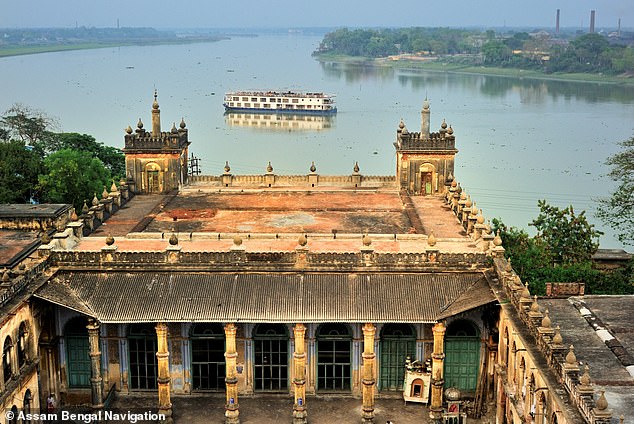My great-aunt Evelyn told me: “Did you know that your four-times great-uncle Charles was eaten by Johann Zoffany?” As a child, I never tired of hearing how my ancestor, returning from Calcutta (Kolkata) with the great artist, was shipwrecked in the Bay of Bengal. Being the youngest, and therefore the most succulent, he was devoured by his fellow passengers.
But now, confident that family history would not repeat itself, my wife and I embarked on a more leisurely journey down the Hooghly River, a tributary of the mighty Ganges, aboard the ABN Rajmahal. The riverboat was chartered by Ibex Expeditions and helmed by its founders, explorer Mandip Singh Soin and his indomitable wife, Anita.
The company was named after the Himalayan ibex, which travels “to places others cannot reach.” So this was no ordinary river cruise, but a collection of surprises that slowly unfolded over eight days.
We spent our first (and last) night at The Park hotel in Kolkata. We dined in grand style at the nearby Glenburn, where we met our fellow students, a mix of academic, business and artistic professionals, including a senior civil servant.
As we continued upriver, our good fortune became more than evident. Although the Rajmahal was neither beautiful nor elegant from the outside, it was extremely comfortable.
Nicholas Courtney boards the ABN Rajmahal (pictured above) for a leisurely cruise along the Hooghly River, a tributary of the Ganges.
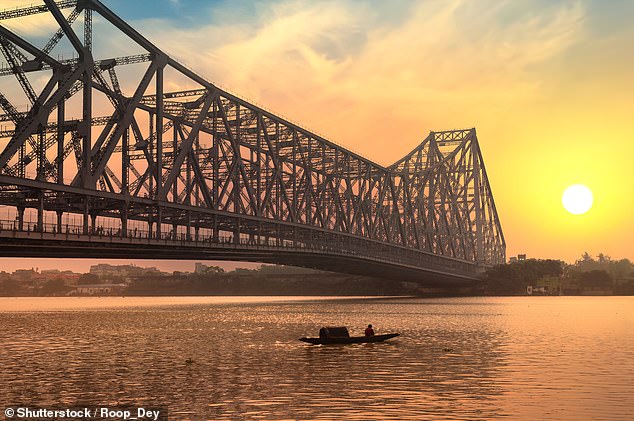
Nicholas begins his slow journey in Kolkata and the boat passes under the city’s Howrah Bridge (above)
We slowly leave Calcutta, passing under the Howrah Bridge, where it is said the equivalent of the entire adult population of New Zealand crosses every day.
We disembark at Barrackpore and walk to Flagstaff House, the original British summer headquarters in India, whose grounds are a fitting graveyard for colonial statues removed from their lofty pedestals in Calcutta.
Continuing with the colonial theme, we visited Chandernagore, the former French colony, marked by wide boulevards and Empire-style buildings, such as the wonderful Dupleix Palace, now a museum housing faded exhibits. I defy anyone not to get caught up in the history and culture of this part of West Bengal. In the village of Hooghly, an ordinary building hides a spacious courtyard flanked by arched cloisters, a large pool and a clock tower.
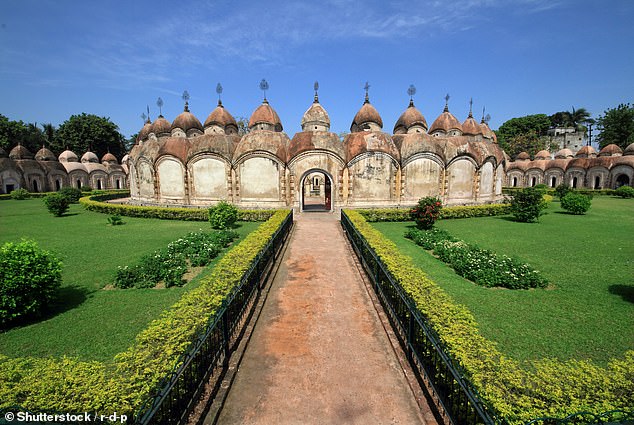
Nicholas explores ‘a vast complex of beautiful Shiva temples’ that lie in ‘two concentric rings’ (pictured above) at Kalna
In Kalna, weavers explained the intricacies of producing fine muslin as they listened to the clatter of looms as they produced their five centimetres of cloth a day. Others spun raw cotton into thread.
A ride in an electric tuk tuk took us to another of the tourist attractions: a vast complex of beautiful Shiva temples. In front of one of them stands the Mother of India tree, with five species growing as one. Across the street are the 108 terraced temples arranged in two concentric rings, and then there is a huge temple that would dwarf St. Peter’s in Rome like a giant Fabergé Easter egg.
We considered ourselves travellers and were cruising down the Hooghly River away from the usual tourist routes. The locals seemed genuinely happy to see us.
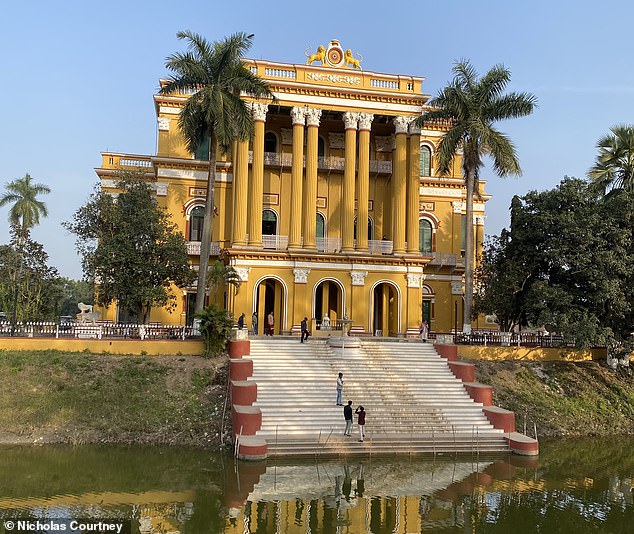
‘Kathgola Palace (pictured above), a neoclassical mansion built by a Jain banking family, followed a visit to the Kathgola Mosque, with its sheer, simple beauty,’ says Nicholas
The river is narrow, so we could enjoy seeing life on both banks: a flock of whistling ducks or a solitary kingfisher, rice paddies worked by women in brightly coloured saris, villages. One of these was Matiari, where barefoot workers poured molten brass into moulds, while others fed the ingots into rolling mills. Our ears were filled with the sound of hammering as pots and plates were hand-made from sheets of metal.
Once on land, electric tuk tuks took us to the site of the Battle of Plassey, where, in 1757, Robert Clive defeated the forces of the Nawab of Bengal, Siraj-ud-Daulah, to establish British control over the region. It is marked by a beautiful obelisk and a bust of Siraj.
Further up the road, at the Hazarduari Palace in Murshidabad, built by Colonel Duncan MacLeod in the 1830s and resembling Buckingham Palace, there was more culture. The museum was interesting but had confusing signage. I loved the painting of “Cleo Patra.”
The Kathgola Palace, a neoclassical mansion built by a Jain banking family, followed the visit to the Kathgola Mosque, with its pure and simple beauty. That evening there was a barbecue on the upper deck of the ship.
On our last day we visited Gaur, the ancient Bengali capital from the 13th century situated on the border with Bangladesh. There we marvelled at two more mosque complexes and the octagonal Firoz Minar tower from the 15th century.
Our river adventure ended at Farakka and after a four-hour train ride back to Calcutta. We had enjoyed a journey for the senses: the tinkling of metalworkers, the bright colours of India (including the turbans of Mandip), the transparent muslin, the feasts at the Rajmahal and the sweet aromas of the spice-laden air. We were truly blessed.
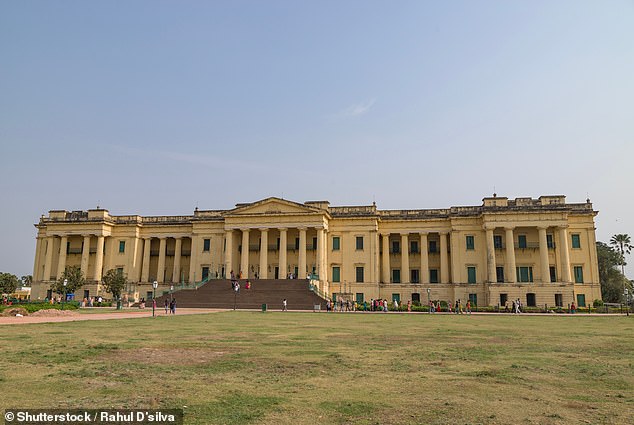
Nicholas visited the Hazarduari Palace (pictured above), which resembles Buckingham Palace and is located in Murshidabad and was built by Colonel Duncan MacLeod in the 1830s.

